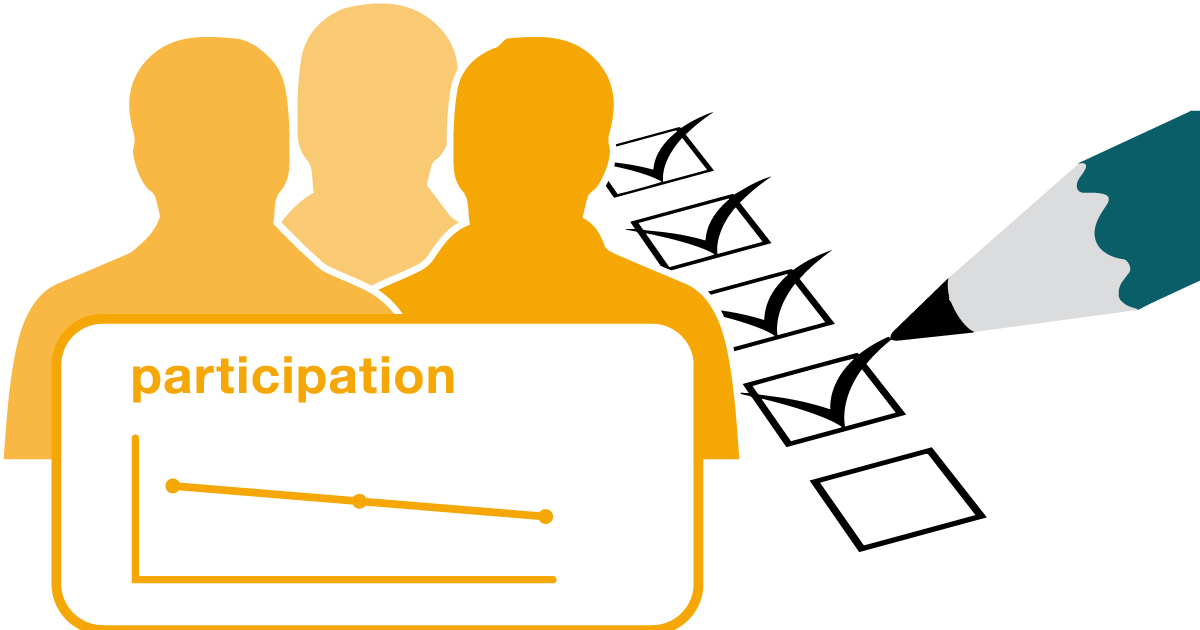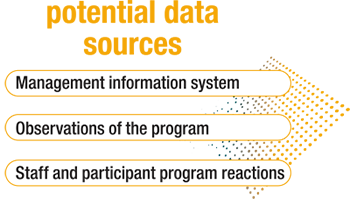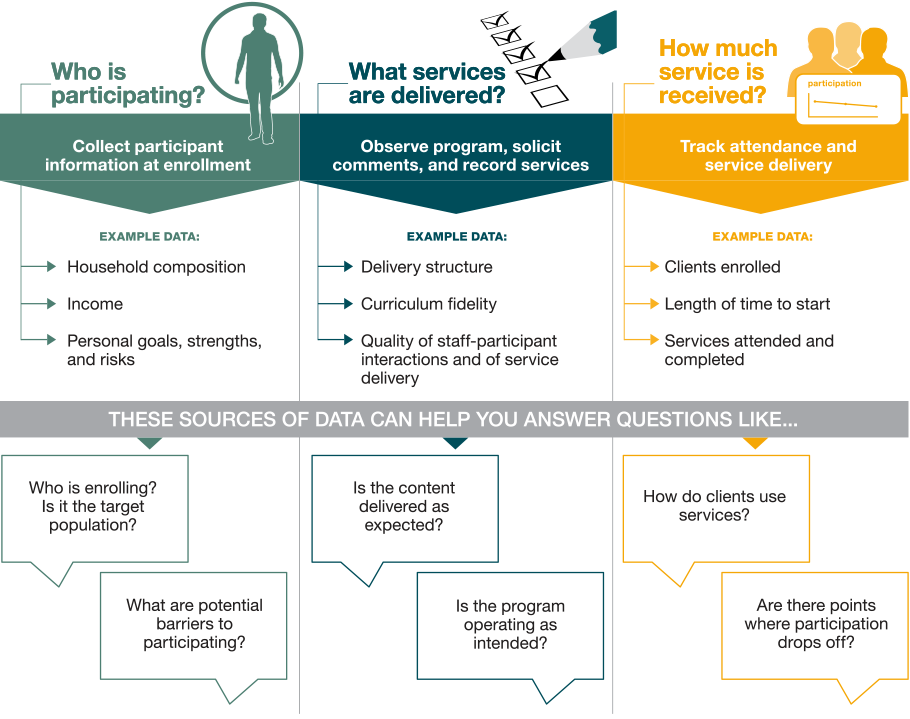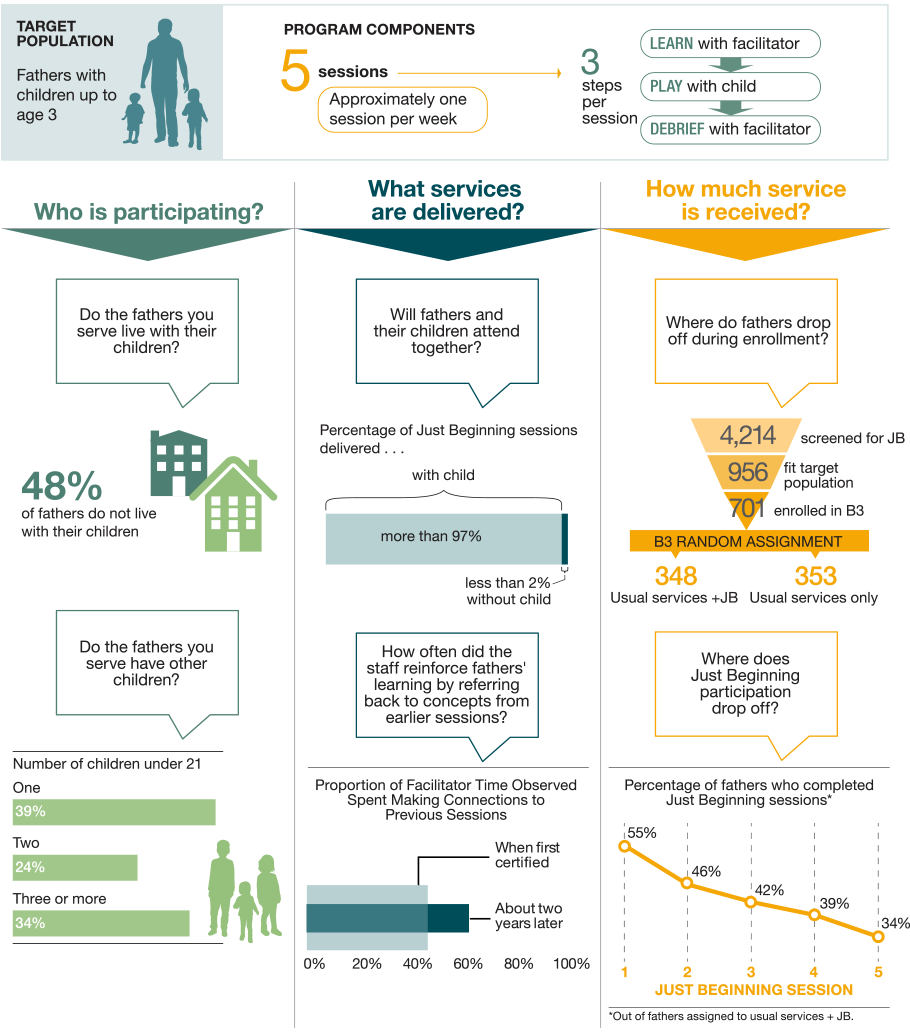Using Data to Understand Your Program

 One approach to program improvement is to use data to help you learn about your program, identify areas for improvement, and set goals. Potential sources of data include your management information system, observations of your program, and reactions from staff members.[1]
One approach to program improvement is to use data to help you learn about your program, identify areas for improvement, and set goals. Potential sources of data include your management information system, observations of your program, and reactions from staff members.[1]
Data can help to answer questions about whom you are serving, what the content of each service is, and how many services clients receive. What you learn may help you identify an improvement strategy to apply to your program. Then you can monitor changes and continue reviewing data to learn about how the strategy is working. This infographic presents examples of how programs in the B3 study used data from different sources to gain insights. Based on these data, the next steps would be for the programs to identify specific opportunities to incorporate new strategies and to continue to monitor the data for improvement.

A CASE STUDY
Cognitive Behavioral Intervention for Justice Involved Individuals Seeking Employment (CBI-Emp)
CBI-Emp is a program designed to improve economic stability using cognitive behavioral techniques. CBI-Emp is currently being implemented and evaluated through random assignment as part of the Building Bridges and Bonds (B3) study.[2]

A CASE STUDY
Just Beginning
Just Beginning (JB) is a parenting program designed to enhance a father’s early relationship with his children. It is currently being implemented and evaluated through random assignment as part of the Building Bridges and Bonds (B3) study.[3]

SOURCE: Data presented are interim findings. Findings collected from the B3 baseline survey for CBI-Emp include fathers randomly assigned as of 1/28/2018. Findings collected from the B3 baseline survey for JB include fathers randomly assigned as of 2/9/2018. Findings collected from nFORM, the management information system used by federally funded fatherhood programs, include fathers randomly assigned as of 10/1/2018.
OPRE report 2019-90
Project officer: Samantha Illangasekare
Contract number: HHS-P23320095644WC
September 2019
Suggested citation: Brennan, Emily, Michelle Manno, and Samantha Steimle. (2019). “Using Data to Understand Your Program.” OPRE Report 2019-90. Washington, DC: Office of Planning, Research, and Evaluation, Administration for Children and Families, U.S. Department of Health and Human Services. Disclaimer: The views expressed in this publication do not necessarily reflect the views or policies of the Office of Planning, Research, and Evaluation, the Administration for Children and Families, or the U.S. Department of Health and Human Services.
[1] Another source of data for program improvement is impact evaluations, like the B3 study, that compare the experiences and outcomes of program participants with those of similar populations who do not participate.
[2] CBI-Emp was implemented at three Responsible Fatherhood sites (Passages, Inc.; The Fortune Society; and The Kanawha Institute for Social Research and Action), supported in part by funding from the Office of Family Assistance.
[3] JB was implemented at three Responsible Fatherhood sites (Children's Institute, Inc.; People for People, Inc.; and Seedco with STRIVE and BronxWorks), supported in part by funding from the Office of Family Assistance.






